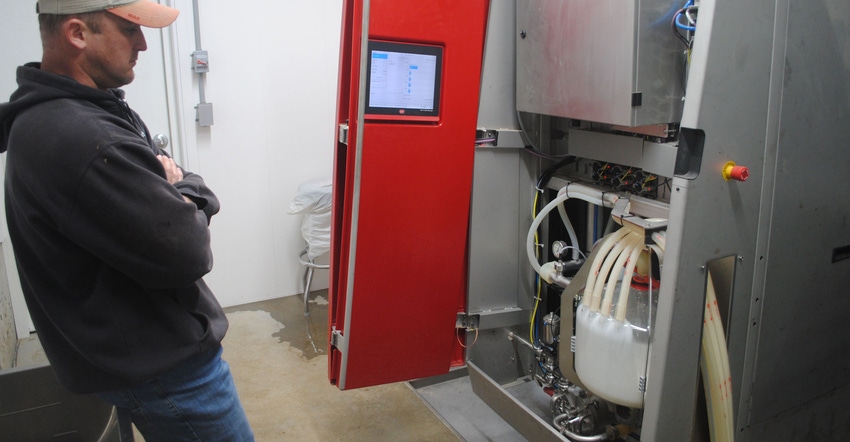
Dairy farmers who are considering the installation of robotic milkers might wonder what the first week is like under the new robotic system. Nebraska Farmer recently visited with Bill Demerath, Plainview, who operates Nebraska's first robotic dairy that went on line in February.
Demerath researched robotic dairies around the region before deciding to install four Lely Astronaut robotic milking stalls in a new milking and loafing dairy facility on the family farm. Assisted by Lely technicians at Gorter's Clay and Dairy Equipment at Pipestone, Minn., and Nebraska Dairy Systems in Norfolk, Demerath worked through the planning and installation processes.
"Three weeks before we were ready to start milking in the new barn, we moved one group of cows into the new facility to help them get used to the barn, but we were still milking them in our old parlor like always," Demerath recalls. "That way, when we were ready to go to the new barn full time, they were already used to it."
The new barn is split into two sides, so he houses half of his 160-head milking herd on each side of the facility, with the milking stalls located within the loafing pens. The robotic milking began on Feb. 21. Because so much of robotics in dairy relies on data, the system had to be calibrated to each individual cow that is identified in the system with a data tag worn around her neck. "We brought each cow into the robotic milking stalls and helped the robots map her teat and udder placement. That way, the robot would then remember each cow's configuration when she came back into the stall," Demerath says. "After a while, the cows got used to coming up on their own into the milking stall for protein pellets."
Demerath says the first couple of days starting out with the robots were hectic. "I think I was awake for something like 55 hours straight," he says. "I didn't want to leave the barn. But my best advice to someone starting up with robotic milking is to listen to your service technicians. They know what they are talking about."
Over the past few months, the cows got used to the new system, and Demerath has learned his new role in managing the herd. He still has a few cows that linger in the barn and do not come into the robotic milking stalls on their own. So, he has to fetch them and bring them in. "Most of the fetch cows are late lactation, so they aren't really looking for the energy in the protein pellets as much," Demerath explains. But the number of those cows has decreased, as the herd has become more accustomed to the new barn and milking system.
Cows also had to become accustomed to the robotic system that now washes their udder before milking with a series of two gentle brushes. Then, the robot uses lasers to guide the milkers in attachment to the udder. If the cow stands still through this process, the attachment time is minimal.
Learn more about this system of robotic milking at lely.com/us or by contacting Nebraska Extension Dairy specialist, Kim Clark at [email protected].
About the Author(s)
You May Also Like






